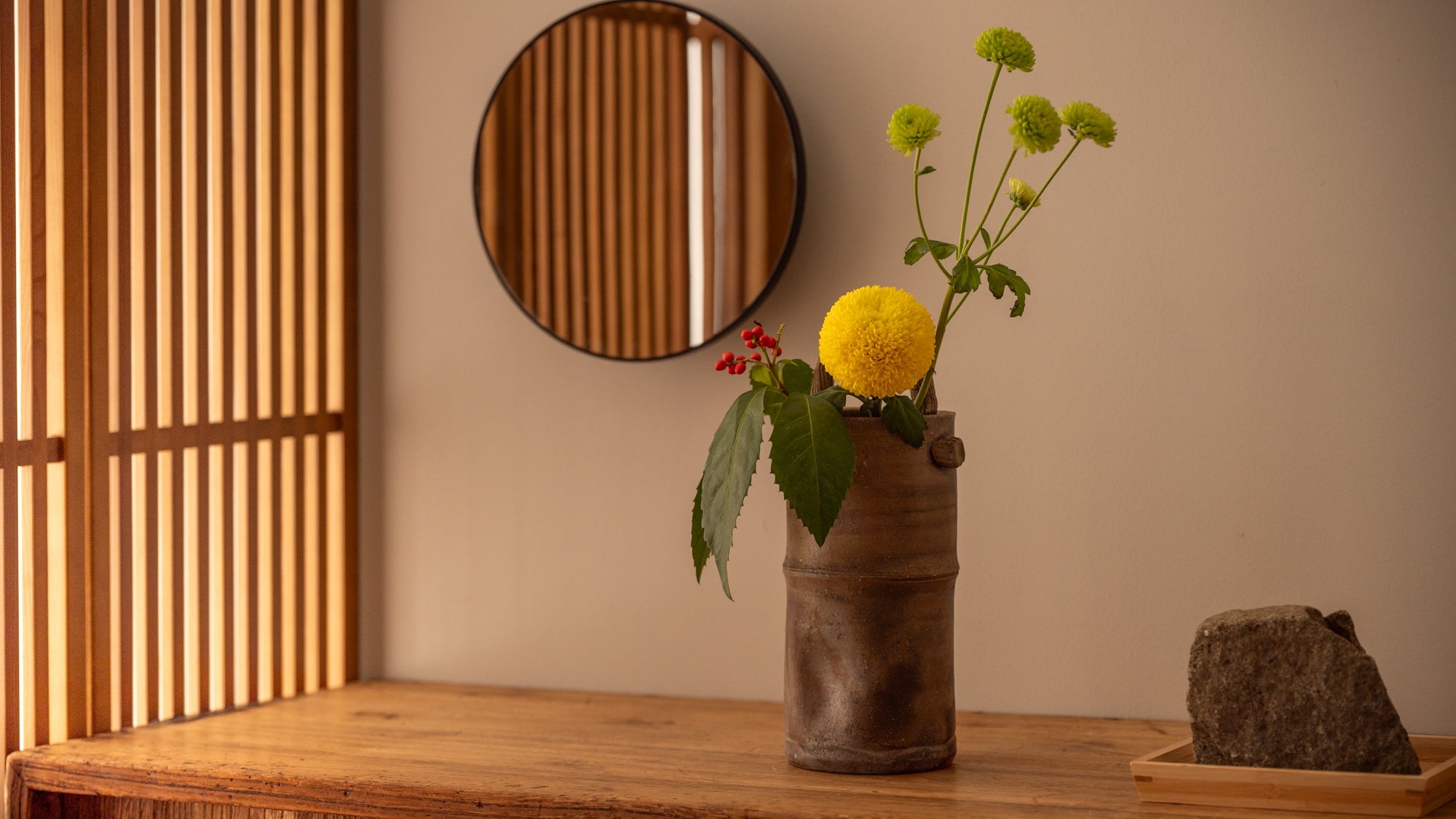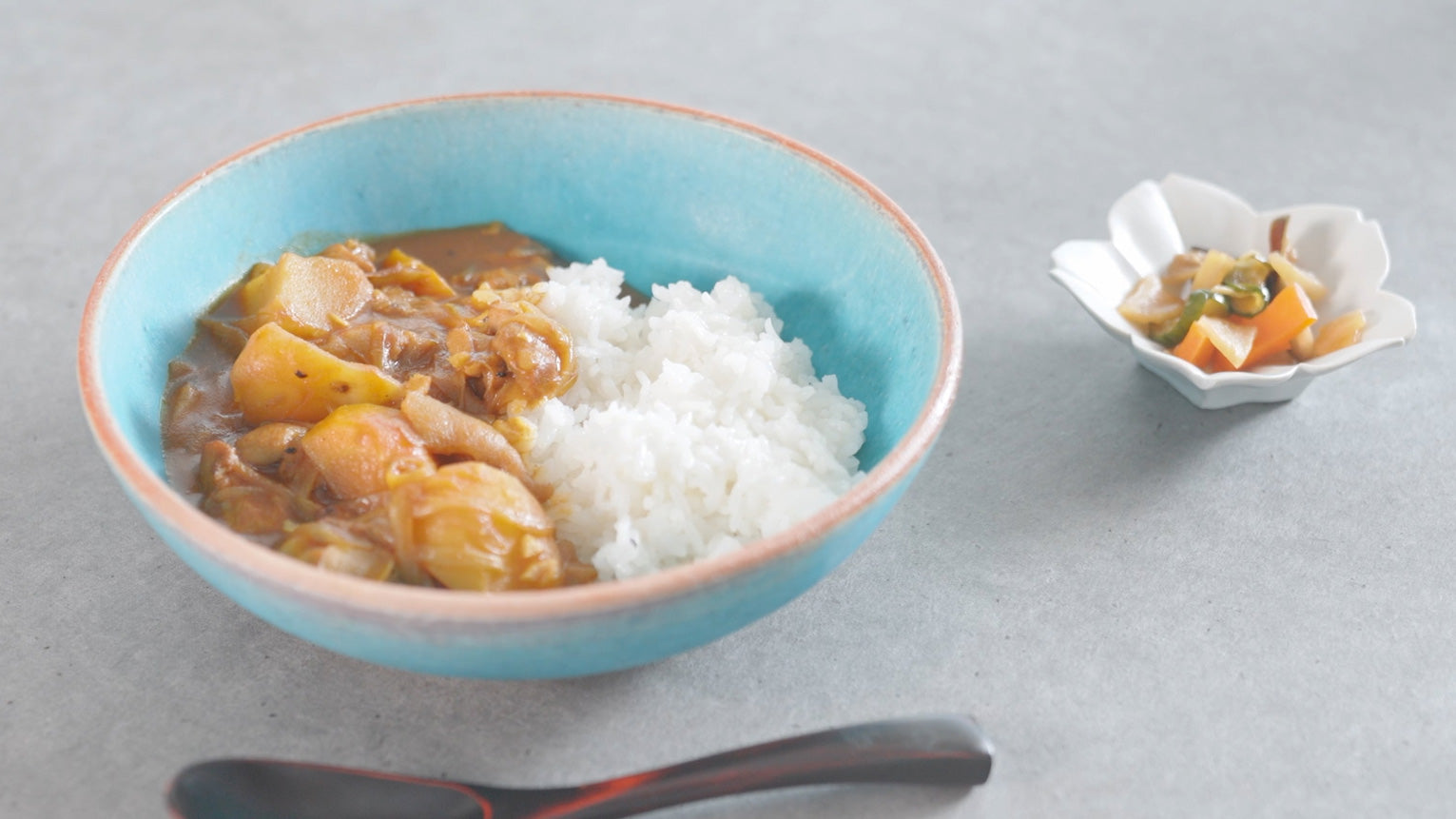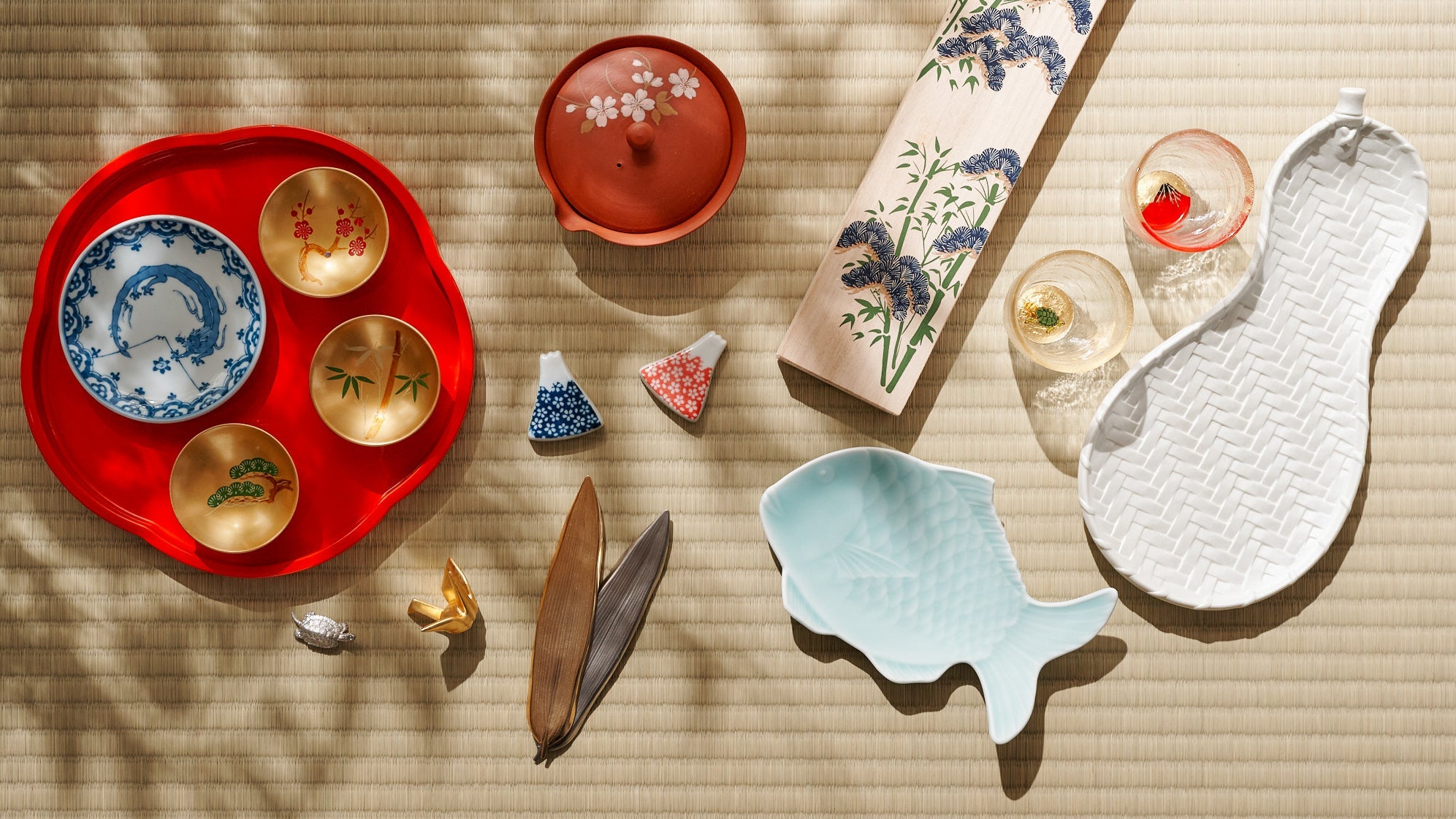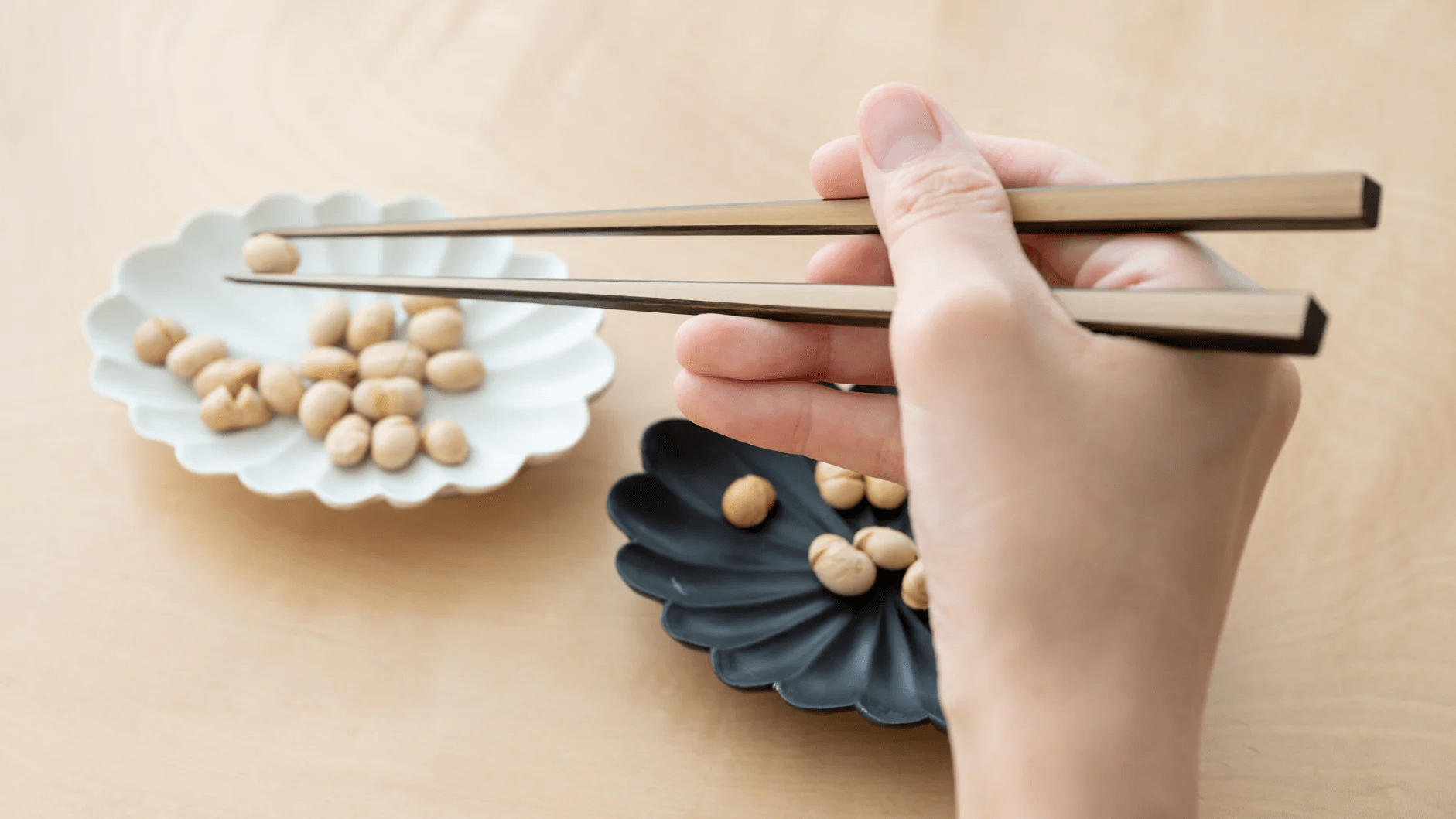
Your Guide to Japanese Flower Vases
Written by Team MUSUBI
Japanese vases hold a special place in both flower displays and home decor. With an impressive variety of shapes, forms, materials, and designs, they complement a wide range of arrangements while standing strong as works of art on their own.
From traditional ikebana pieces to simple designs for single blooms, each vase offers a fresh perspective on showcasing flowers and introduces aesthetics that feel distinctly Japanese. Rooted in traditional craftsmanship, these pieces embody a dedication to artistry and precision passed down through generations.
Explore the world of Japanese vases and discover beauty and grace, ready to illuminate your home with elegance and thoughtful design.
Table of contents
Types of Japanese Vases
Ikebana Vases
Ikebana vases are designed for the Japanese art of flower arrangement, known as ikebana. These vases often feature wide and shallow for asymmetrical and artistic compositions. The structure of the vase supports stems, giving balance and harmony to each arrangement.
Like the sail of a yacht: Imagine the flower vase as a sailboat, and the flowers and plants as the sails. In ikebana, flowers are arranged in a triangular silhouette to create a visually appealing balance. The shape of the vase guides the arrangement, enhancing the overall aesthetic.
Bud Vases
Bud vases are small and minimalist, designed to hold a single flower or a small arrangement. They emphasize simplicity and the beauty of a single bloom, making them perfect for accentuating a quiet corner or a small space. When using a single-flower vase, cut the stems short so that the height between the flower and the vase is about 1:1 to 1:1.5.
Large Bouquet Vases
These vases are more robust and can accommodate fuller arrangements. They are often used for more elaborate floral displays on large tables, shelves or entranceways. Vases with a large mouth can be tricky as the arrangement tends to disperse. For balance, ensure the height of the vase and the visible part of the plant are in a 1:1 ratio. Alternatively, arrange flowers to flow to one side for a visually pleasing effect.
Vases with smaller mouths may be easier, especially for beginners. A vase with a mouth smaller than a fist (around 10 cm) is recommended.
Materials and Their Appeal
Porcelain
Porcelain vases are celebrated for their delicate craftsmanship and smooth texture. Many feature intricate hand-painted designs that tell stories of nature and tradition, with vibrant colors or detailed overglaze painting. Their striking appearance design makes them an ideal choice for showcasing luxurious, large bouquets, and for standalone decor pieces.
Stoneware
Stoneware vases, on the other hand, are admired for their earthy texture, robustness, and understated appeal. These vases often feature subtle patinas and muted, rustic tones that reflect their connection to nature and traditional craftsmanship.
While some stoneware vases boast simple, minimalist designs, others display artful carvings or distinctive handles that add character and depth. Their grounded aesthetic makes them perfect for wild blooms and sculptural branches that complement their natural charm.
Metalwork
Metal vases, often made from brass or bronze, have a unique presence. They are sometimes molded in intricate shapes or shaped into frame-like designs. Their distinct metallic coldness gives an artistic contrast to the flowers and greenery.
Lacquerware
Lacquerware vases are a stunning example of Japanese craftsmanship, combining traditional techniques with modern aesthetics. Their lustrous surface exudes refinement and artistry.
Some designs emphasize the beauty of smooth lacquer coating, creating a glass-like shine that reflects light from every angle, while others highlight the natural wood grain beneath the lacquer, adding an organic texture.
Bamboo
Lightweight and natural, bamboo vases bring an organic touch to floral arrangements. Their simple, clean lines harmonize beautifully with the minimalist essence of Japanese design. With an airy presence and a design that evokes a zen-like calmness, bamboo vases are especially suited for warmer seasons, effortlessly complementing seasonal blooms and delicate, feathery foliage.
Glass
Glass vases are celebrated for their transparency, lightness, and versatility. Their clear surfaces allow stems and water to become part of the display, creating an open and airy aesthetic. The smooth texture of glass offers a beautiful reflection as the play of light through water and stems adds a captivating visual delight.
Perfect for seasonal flowers, wild blooms, or even single stems, glass vases effortlessly adapt to various styles and seamlessly blend into any setting—be it modern, rustic, or traditional.
Design Styles
Timeless Classics
Classic Japanese vase designs often feature traditional motifs such as cherry blossoms, cranes, and waves. These patterns tell tales of nature’s wonders, cultural heritage, and auspicious symbols.
Contemporary Expressions
Modern Japanese vases often embrace sleek lines, abstract shapes, and minimalistic aesthetics. They blend seamlessly into contemporary spaces while maintaining cultural authenticity and age-old craftsmanship.
Wabi Sabi Charm
Wabi sabi celebrates imperfection and the natural passage of time. Vases in this style often have raw textures, earthy tones, and irregular shapes, adding a sense of organic beauty to any space.
Easy Tips for Decorating with a Japanese Vase
While the specific rules may vary depending on the vase you choose, here are some basic guidelines you can follow when decorating with Japanese vases, regardless of their type or style.
Embrace Simplicity
Avoid overcrowding your vase with too many flowers. A single stem or a minimalist arrangement often creates a powerful impact like simple seasonal arrangements displayed during tea ceremonies.
For ikebana arrangements, follow the same rule by not filling the kenzan (flower frog).
Consider Placement
Place your vase on a stable, balanced surface where it can be fully appreciated, such as an entryway table, coffee table, or alcove. Avoid placing it in direct sunlight to help your flowers last longer and to prevent potential damage to vases made of bamboo or metal.
One important point to remember is that, unlike Western-style floral arrangements, ikebana displays are designed with a distinct front and back side. Therefore, choose a space where only the front is visible to viewers, such as against a wall or in an alcove, to ensure the arrangement is appreciated from its intended angle.
Play with Heights
Experiment with different stem lengths to create visual balance. Especially in ikebana arrangements, variation in height adds a sense of movement and establishes a three-dimensional harmony in your display. It’s not just flowers—branches and foliage can also be used to create tall focal points and short accents, adding depth and character to the composition.
Caring for Your Vase
Clean Regularly

After each use, rinse your vase thoroughly to prevent residue buildup. Avoid using metal sponges or abrasive cleaning agents, as they can damage the surface. For metal vases, ensure all surfaces are carefully dried with a soft cloth to prevent spots or tarnishing.
Some vases feature removable glass tubes or inner containers specifically designed for holding flowers. In such cases, you only need to wash the inner container, while the main vase can be cleaned with a simple wipe.

Handle with Care
Porcelain and glass vases are fragile, so handle them gently. Vases with handles and attachments on their sides are also prone to breakage, so care should be taken when returning them to their original packaging or washing them.
Avoid Direct Sunlight
Prolonged exposure to sunlight can cause fading, especially on painted designs.

Store Safely
When not in use, store your vase in a safe space or in its original package to avoid accidental damage.
This guide has walked through different styles, materials, and uses of Japanese vases, along with tips on how to choose and care for them—helping you find the perfect piece to complement your space and style.
For a deeper dive into floral arrangements using Japaense vases, explore our three-part blog series, A Step-by-Step Guide for Ikebana Beginners, starting with Part 1.























Leave a comment
This site is protected by hCaptcha and the hCaptcha Privacy Policy and Terms of Service apply.